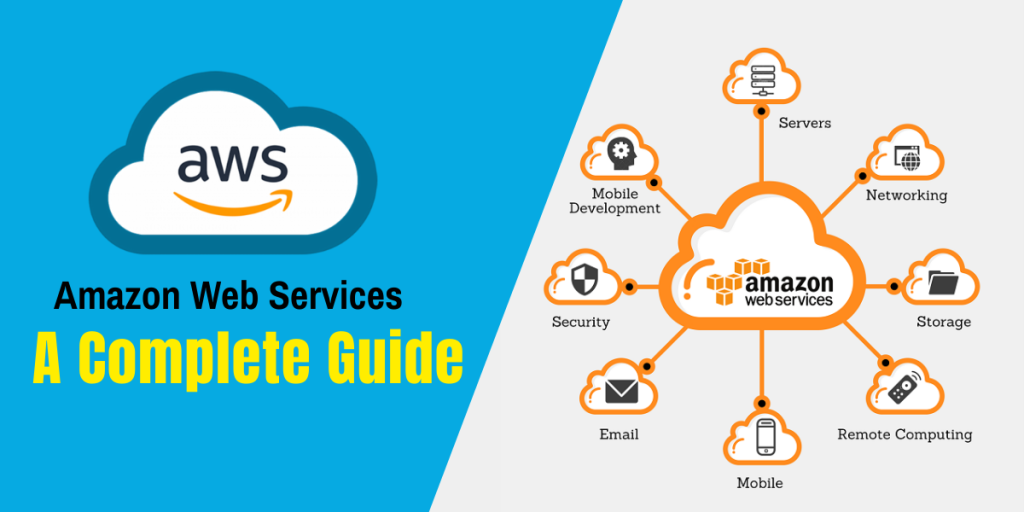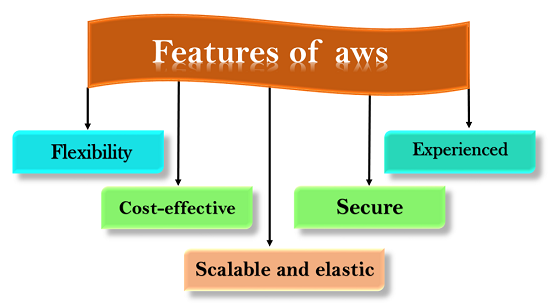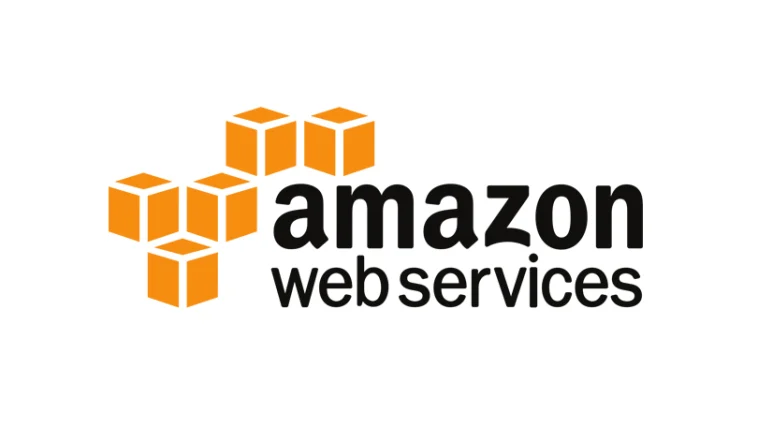(AWS)Amazon Web Services – Review
In today’s fast-paced digital landscape, businesses are continually seeking reliable and efficient solutions to manage their IT infrastructure. Amazon Web Services (AWS) has emerged as a leading cloud computing platform, providing a wide range of services that empower businesses to scale, innovate, and drive success. In this article, we delve into a comprehensive review of Amazon Web Services, exploring its features, benefits, use cases, and more.
Introduction to Amazon Web Services (AWS)
Amazon Web Services (AWS) is a cloud computing platform provided by Amazon, offering a suite of on-demand services that enable individuals and organizations to access and manage a range of applications and resources remotely. This cloud infrastructure provides businesses with the tools they need to build, deploy, and manage applications seamlessly.

The Extensive Service Offerings
Computing Services
AWS provides a range of computing services, such as Amazon EC2 (Elastic Compute Cloud), allowing users to create virtual servers and customize their computing environment according to their needs. Compute services are also known as Infrastructure-as-a-Service (IaaS). Compute platforms, such as AWS Compute, supply a virtual server instance and storage and APIs that let users migrate workloads to a virtual machine.
AWS provides a variety of cost-effective and flexible computing services to meet the needs of your organization such as Amazon Elastic Compute Cloud (EC2), Amazon Elastic Container Service (ECS), Amazon Elastic Container Service for Kubernetes (EKS), Amazon Lightsail, AWS Batch, and AWS Lambda to name a few. For some services like Amazon EC2, you have extensive control of the underlying resources while for others, AWS has full control.
Storage Solutions
With Amazon S3 (Simple Storage Service), users can store and retrieve large amounts of data effortlessly, while Amazon EBS (Elastic Block Store) offers persistent block storage for EC2 instances. The AWS Storage Gateway is a hybrid storage service that allows your on-premises applications to seamlessly use AWS cloud storage. You can use the service for backup and archiving, disaster recovery, cloud data processing, storage tiering, and migration.
- Backup and Storage – Provide data backup and storage services for others.
- Application Hosting – Provide services that deploy, install, and manage web applications.
- Media Hosting – Build a redundant, scalable, and highly available infrastructure that hosts video, photo, or music uploads and downloads.
- Software Delivery – Host your software applications that customers can download.
- Static Website – you can configure a static website to run from an S3 bucket.

1. Database Management
AWS offers various database solutions, including Amazon RDS (Relational Database Service), DynamoDB, and Amazon Redshift, catering to different types of data storage and management requirements. AWS Cloud Databases provides a broad selection of purpose-built databases for any enterprise. AWS databases support all database management tasks, such as server provisioning, patching, configuration, and backups.Choose from 15 purpose-built databases, including relational, key-value, document, in-memory, graph, time-series, and ledger databases.
2. Networking Capabilities
Amazon VPC (Virtual Private Cloud) enables users to create isolated networks within the AWS cloud, enhancing security and control over network resources. AWS networking services allow customers to separate their cloud infrastructure, scale-up workload request and even connect the physical network to personal private virtual networks.
Cloud networking is a type of IT infrastructure in which some or all of an organization’s network capabilities and resources are hosted in a public or private cloud platform, managed in-house or by a service provider, and available on demand.
3. Flexibility and Scalability
One of the standout features of AWS is its flexibility and scalability. Users can easily adjust their resources based on demand, ensuring efficient resource utilization and cost-effectiveness. Cloud scalability in cloud computing refers to the ability to increase or decrease IT resources as needed to meet changing demand. Scalability is one of the hallmarks of the cloud and the primary driver of its exploding popularity with businesses. That saves precious time for IT staff. Instead of spending hours and days setting up physical hardware, teams can focus on other tasks. Flexibility and speed: As business needs change and grow—including unexpected spikes in demand cloud scalability allows IT to respond quickly.
4. Cost-Efficiency and Pricing Models
AWS follows a pay-as-you-go pricing model, allowing users to pay only for the resources they consume. This cost-efficient approach is particularly beneficial for businesses of all sizes. Achieving cost-efficiency in AWS servers involves optimizing resource usage through strategies like right sizing, auto scaling, and utilizing reserved or spot instances. AWS offers diverse pricing models including on-demand instances for flexible usage, reserved instances for longer-term commitments with discounts, and spot instances for cost savings at the risk of interruption. Dedicated instances and hosts cater to compliance and licensing needs, while serverless pricing like AWS Lambda charges based on actual execution, aligning costs with usage. Selecting the apt model and optimization approach, guided by usage patterns and budget, is crucial for maximizing value in AWS server deployment.
5. Security Measures and Compliance
Security is a top priority for AWS. The platform offers a wide range of security features, including data encryption, identity and access management, and compliance with various industry standards. AWS Compliance empowers customers to understand the robust controls in place at AWS to maintain security and data protection in the AWS Cloud. When systems are built in the AWS Cloud, AWS and customers share compliance responsibilities.
6. Real-world Use Cases
AWS has been adopted by numerous organizations across various industries. For instance, Airbnb utilizes AWS to ensure scalability during peak booking periods, while Samsung relies on AWS for its cloud-based services. AWS has more services, and more features within those services, than any other cloud provider, including compute, storage, databases, networking, data lakes and analytics, machine learning and artificial intelligence, IoT, security, and much more.
- IoT Applications: Internet of Things (IoT) devices can be connected to AWS for data collection, processing, and analysis. This enables smart home devices, industrial sensors, and more.
- Machine Learning and Artificial Intelligence: Organizations use AWS for building and deploying machine learning models and AI applications. AWS offers services like Amazon SageMaker for model training and hosting.
- Content Management and Distribution: Companies in the media and entertainment industry can use AWS to manage and distribute content globally. Services like Amazon CloudFront enable fast and secure content delivery.
- Disaster Recovery and Backup: AWS provides reliable and cost-effective disaster recovery solutions. Businesses can replicate their data and applications across different AWS regions to ensure high availability.
- DevOps and Continuous Integration/Continuous Deployment (CI/CD): Development teams utilize AWS to build automated CI/CD pipelines, enabling efficient and rapid software development and deployment.
7. Performance and Reliability
AWS boasts a robust and reliable infrastructure, with data centers strategically located around the world. This setup ensures low-latency performance and high availability.
Performance: The Performance Efficiency pillar includes the ability to use computing resources efficiently to meet system requirements, and to maintain that efficiency as demand changes and technologies evolve. The performance efficiency pillar provides an overview of design principles, best practices, and questions.
Reliability: The Reliability pillar includes the reliability pillar encompasses the ability of a workload to perform its intended function correctly and consistently when it’s expected to. this includes the ability to operate and test the workload through its total lifecycle.
8. DevOps and Automation
DevOps:
DevOps is an approach to culture, automation, and platform design intended to deliver increased business value and responsiveness through rapid, high-quality service delivery. DevOps practices bring development and operations team members together into a single DevOps team. This moves ideas and projects from development to production faster and more efficiently. DevOps involves more frequent changes to code and more dynamic infrastructure use when compared to traditional, manual management strategies.
Automation:
Automation is the use of technology to perform tasks with reduced human assistance. Automation helps you accelerate processes and scale environments, as well as build continuous integration, continuous delivery, and continuous deployment (CI/CD) workflows. There are many kinds of automation, including IT automation, business automation, robotic process automation, industrial automation, artificial intelligence, machine learning, and deep learning.
9. Integration and Compatibility
AWS offers seamless integration with various programming languages, tools, and platforms, making it easy for developers to integrate their existing applications with the cloud.
Automate the progression of information between SaaS applications and AWS administrations at almost any scale, without code. Amazon AppFlow. Work processes. Coordinate different AWS administrations into serverless work processes so you can fabricate and refresh applications rapidly.
10. User-Friendly Interface
The AWS Management Console provides an intuitive interface for managing resources, enabling users to monitor and control their services effortlessly. The AWS Control center is an easy to understand interface that is appropriate for straightforward errands. For instance, making and overseeing occurrences is a breeze with the control center. The connection point is instinctive and simple to explore, making it an incredible choice for those new to AWS or the people who favor a graphical point of interaction. The AWS Management Console is a graphical interface used to interact with AWS services and features.

Conclusion
In conclusion, Amazon Web Services has revolutionized the way businesses approach IT infrastructure. Its wide array of services, flexibility, scalability, and robust security measures make it a preferred choice for companies aiming to embrace the benefits of cloud computing.
